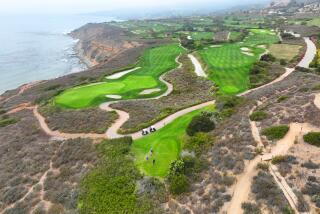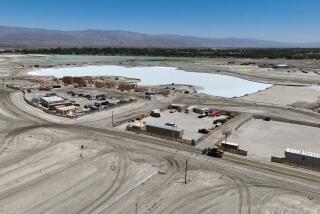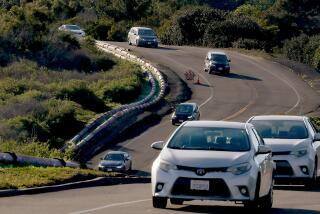Hotel on Marineland Site Will Add to Traffic, Pollute Air, Study Says
- Share via
Air quality will be worsened and traffic at major intersections on the Palos Verdes Peninsula will be significantly increased by a proposed 495-room hotel on the old Marineland site in Rancho Palos Verdes, according to a report released Monday.
The draft environmental impact report on the Long Point Development listed these as the most significant drawbacks to The Monaghan Co.’s proposal to build the resort hotel and a nine-hole golf course.
A public hearing will be held Dec. 11 on the report, which was written for the city by Myra Frank & Associates of Los Angeles. After reviewing public comments, the city will make a decision on the project by the middle of February, said Carolynn Petru, a senior city planner.
The report said the increased traffic and the use of electricity and natural gas to operate the hotel will result in air pollution exceeding South Coast Air Quality Management District limits for the area.
Also, the report said, peak-hour traffic at three intersections--Palos Verdes Drives North and West in Palos Verdes Estates, Hawthorne Boulevard and Palos Verdes Drive North in Rolling Hills Estates and Hawthorne Boulevard in Rancho Palos Verdes--will increase greatly during and after construction of the hotel. The report did not estimate how much traffic will increase.
To alleviate the congestion, the report suggested adding turn lanes and through streets to widen the intersections, with Monaghan paying the cost.
However, Joan Hanley, director of public affairs for Monaghan, said the company may have problems getting the peninsula cities to approve the street improvements.
“There’s no way Mr. Monaghan can improve the traffic in the cities of Rolling Hills Estates and Palos Verdes Estates,” Hanley said. “The people would tell him they don’t want (the changes). They like the streets the way they are . . . and want them to stay rural.”
At the City Council’s request, the report, which normally would deal only with environmental issues, also briefly looks at the revenues the project would bring to Rancho Palos Verdes.
“The project is expected to result in a beneficial financial effect,” the report said, with the city gaining $25.4 million in economic activity over a 20-year period. About $20 million of that would come in bed taxes, said Bob Benard, city director of environmental services.
The 175-page report, commissioned in May, 1988, listed alternatives to the proposed hotel, ranging from building no project to building it somewhere else. It also looked at the possibility of reducing the number of hotel rooms to 350 or of adding 45 units of single-family housing to the 495-room hotel.
Building a marine research facility on the site was also suggested, because it would generate 70% less traffic than the hotel, the report said.
Copies of the report are available for public review at City Hall.
More to Read
Sign up for Essential California
The most important California stories and recommendations in your inbox every morning.
You may occasionally receive promotional content from the Los Angeles Times.










